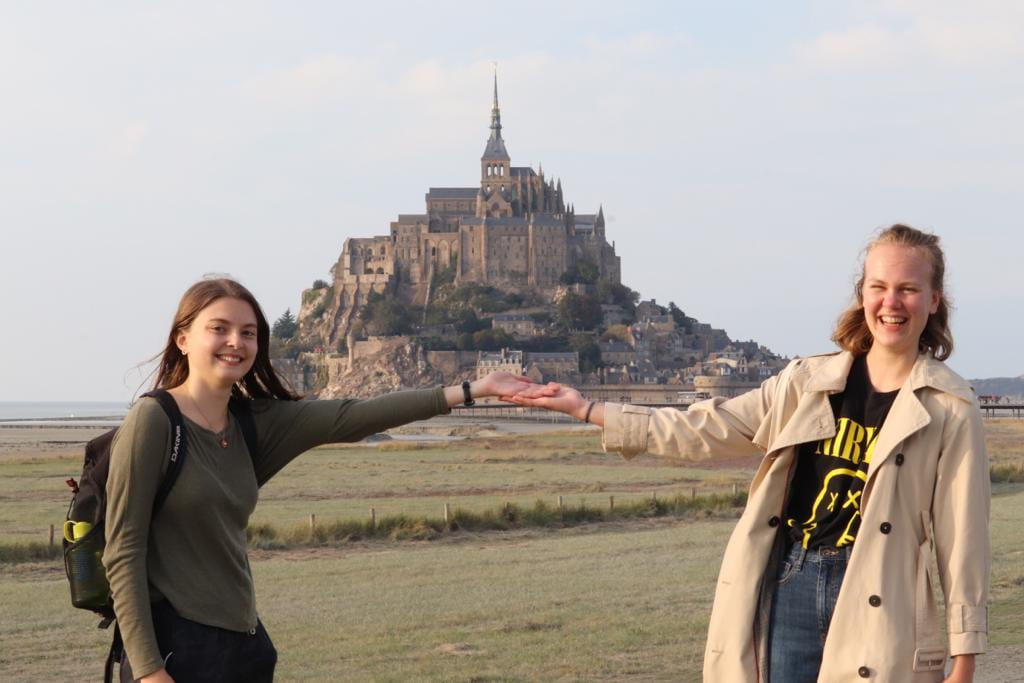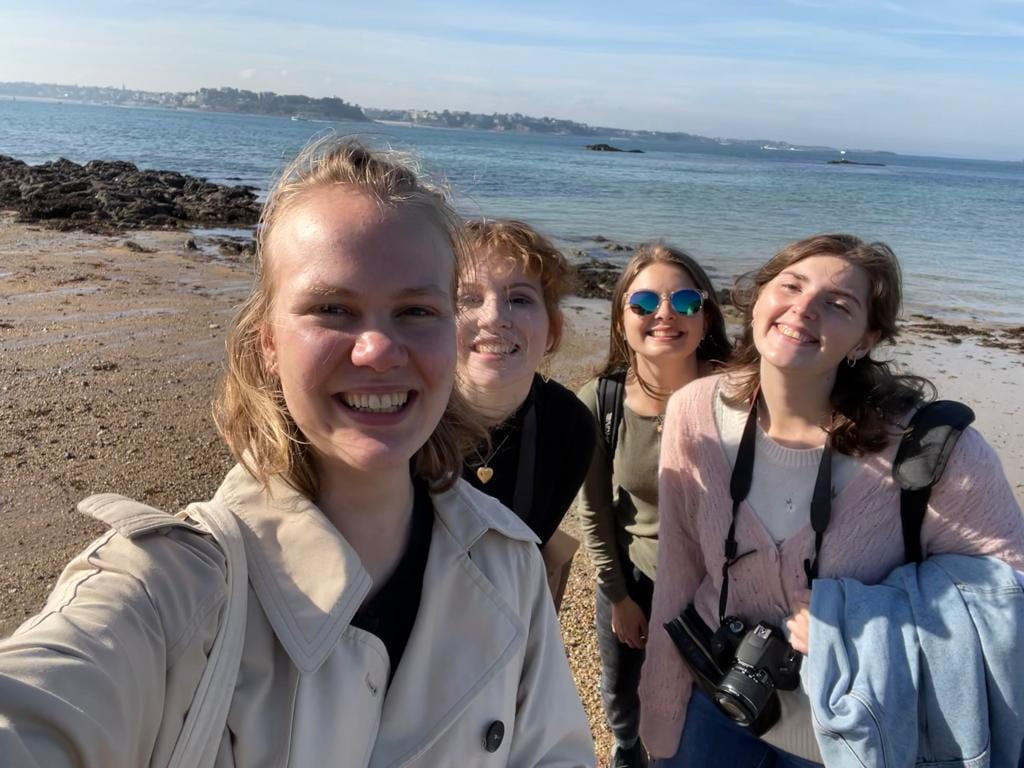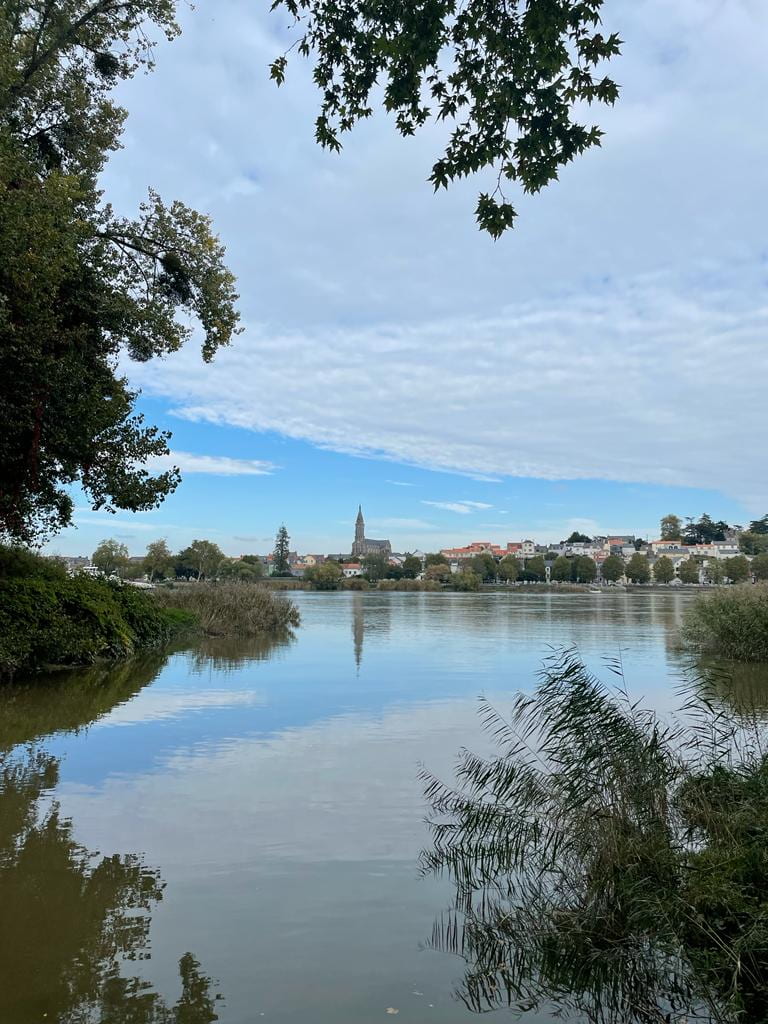Hello, all! It has been about two weeks since my last blog post and much has happened during that time. In the best of ways, it feels like it has been an eternity since I visited my great-grandmother’s friend (which was when I wrote my most recent blog post). The weather in Nantes has slowly started to change from summer to fall—we are currently in that odd middle area where one day can include both pouring rain and sunny blue skies. The unpredictable weather does catch me off guard sometimes, but also reminds me of home as the Seattle area has similarly inconsistent weather this time of year.
In this post I am going to discuss the effects of the ongoing COVID-19 pandemic on my experience in Nantes and the transportation system.
The pandemic:
Studying abroad during the pandemic is unusual as the world has changed so much in these past two years. Most larger venues in France, such as museums, require patrons to present a “pass sanitaire” (health pass) on your phone upon arrival. This COVID pass verifies that you have either been fully vaccinated against COVID-19 or that you have received a recent negative COVID test. The idea is that it improves safety in places with many people and helps prevent the spread of the virus. In places that require the pass sanitaire, you often do not have to wear a mask. However, on the public transportation system, a mask is obligatory. Masks are also required at the University of Nantes and in the IES center. This can make language learning hard as you cannot see the movement of a person’s mouth when they speak. It’s an incredibly important—and often overlooked—part of language comprehension!
As we all do, I often wish the pandemic would just disappear. However, it has been very interesting to see the public health measures being implemented here and how they compare with those in the US.
Public transportation:
The public transportation system in France is impressive and often blows me away. In the US, most people drive cars to get from place to place, but in France it is comparably rare to own a car and/or drive a car every day. There is an elaborate web of trains in Nantes that extend throughout the city and can easily transport you wherever you need to go. Every day, I take train 23 from my host family’s house to the IES center. The walk from my house to the bus stop is only a few minutes, the bus ride is about 10 minutes, and it takes me another seven minutes to walk from the end bus stop to IES, resulting in a commute of about 20 minutes. However, this can vary from day-to-day depending on traffic and the timeliness of the bus routes. Sometimes buses will show up late, not show up at all, or be stalled by protests or traffic, which has forced me to become more flexible and proactive in planning my daily schedule.

View from the Place du Cirque bus stop in the centre ville of Nantes.
Excursions:
I want to touch quickly on my most recent excursions around France. Last weekend, the IES group went on a day trip to visit Saint-Malo and Mont-Saint-Michel. I was especially enamored by Saint-Malo, which is a walled port city in northwestern France with beautiful beaches and architecture. (Interesting historical side note: Saint-Malo was bombed by the Americans in 1944 during the liberation of the city from German occupation. About 80% of the old city was destroyed, but much has been rebuilt since.) Mont-Saint-Michel was also stunning, of course!

Mont-Saint-Michel!

Saint-Malo
The following day, I visited the city of Indre with my host family and we went to a marché (an open-air farmer’s market) then hiked around the city. It was absolutely beautiful and was nice to have a short break from the bustling city life of Nantes. My host mom taught me how to open chestnuts on the ground that have fallen of trees, and I helped her in collecting them.

The city of Indre which I visited with my host family.
If you are considering the IES Nantes program, you are probably hoping for more information about the “daily life” of study abroad students, so I will touch on this in my next post. My daily schedule varies significantly from day to day, but I will give you an example of a day in the life of an American student in Nantes.
À bientôt,
Ella